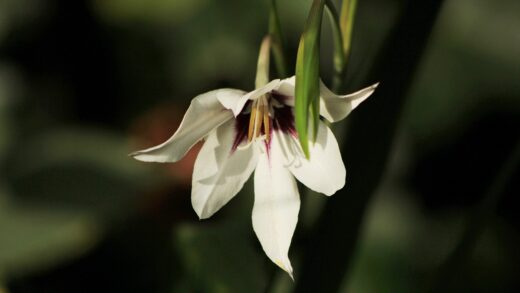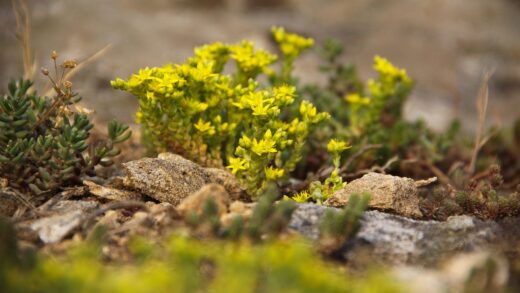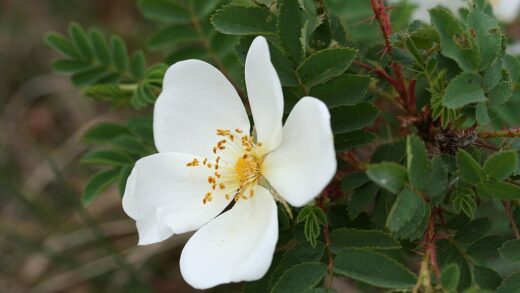The Anatolian colchicum is a remarkably hardy plant, well-adapted to withstand cold winter temperatures, a trait inherited from its native mountainous habitats where snowy winters are common. For gardeners in temperate climates, corresponding to USDA hardiness zones 4 through 9, this species generally requires no special or elaborate protection to survive the winter months successfully. The corm, resting dormant deep within the soil, is naturally insulated from the harshest surface conditions, allowing it to weather freezing temperatures and emerge unscathed in the spring. This inherent toughness makes it a low-maintenance and reliable choice for a wide range of gardens.
Once the autumn flowering display is over, the plant enters a period of deep dormancy that lasts throughout the entire winter. During this time, all of the plant’s life energy is safely stored within the subterranean corm. There is no above-ground growth to protect, as the leaves will not emerge until the warmer, longer days of spring arrive. This life cycle strategy is a perfect adaptation for surviving cold, harsh winters, as there are no delicate tissues exposed to damaging frosts, freezing winds, or heavy snow loads.
The primary role of the gardener during the winter is therefore one of observation and ensuring that the fundamental growing conditions remain favorable. The most significant threat during the winter months is not the cold itself, but rather the combination of cold and excessive wetness. Soil that is both frozen and waterlogged can be fatal to the corms, as it can lead to rot or physical damage from ice crystals. This underscores, once again, the supreme importance of having planted them in a well-draining location from the very beginning.
In essence, the best wintering strategy is a passive one that is established long before winter arrives. By selecting a suitable site and preparing the soil correctly to ensure excellent drainage, you have already provided your Anatolian colchicum with everything it needs to navigate the winter successfully. The plant’s own natural hardiness will take care of the rest, making it a truly resilient and worry-free addition to the garden during the coldest part of the year.
The role of snow and mulch
In regions that receive reliable winter snowfall, the snow itself acts as a perfect natural insulator for the dormant corms. A thick blanket of snow protects the ground from the deep-freezing effects of arctic air and prevents the damaging cycles of repeated freezing and thawing that can heave plants out of the soil. Snow cover maintains a more stable, albeit cold, temperature in the soil, which is ideal for the resting corms. For this reason, in colder climates, a good snow cover is one of the best forms of winter protection you could ask for.
In areas with cold winters but inconsistent snowfall, applying a layer of organic mulch in late autumn can be beneficial to replicate the insulating effects of snow. After the ground has frozen lightly, a 5 to 10-centimeter layer of a light, airy material like shredded leaves, pine needles, or straw can be spread over the area where the colchicums are planted. This mulch helps to insulate the soil, reduce temperature fluctuations, and prevent deep freezing, protecting the corms from extreme cold.
It is important to apply the mulch after the first hard frost has occurred. If you apply it too early while the ground is still warm, it can trap heat and moisture, potentially encouraging rot or attracting rodents seeking a warm place to nest for the winter. The goal of winter mulching is not to keep the ground warm, but rather to keep it consistently frozen and protected from harsh, drying winds and the physical stress of freeze-thaw cycles.
Come early spring, it is important to gently rake away or remove the thickest layers of this winter mulch. This allows the sun to reach and warm the soil, which helps to signal the corms to begin their spring growth. Leaving a heavy mulch layer in place for too long can delay the emergence of the foliage and can also create a damp environment that might encourage slugs and other pests as the weather warms up. A thin layer of compost or leaf mould, however, can be left in place to nourish the soil.
Winter drainage considerations
While cold temperatures are not a significant concern for healthy Anatolian colchicum corms, poor winter drainage can be a lethal issue. During winter, periods of rain, sleet, and melting snow can lead to saturated soil conditions. If this water cannot drain away freely, it creates an anaerobic environment that is conducive to rot, even in cold temperatures. This is particularly problematic in heavy clay soils, which can become like a cold, wet concrete around the corms.
The risk is highest in gardens where water tends to collect in low-lying spots or in areas with compacted soil. Before planting, it is crucial to observe your garden’s drainage patterns during a heavy rain to identify any areas that remain puddled for long periods. These locations should be avoided for planting colchicum and other bulbs that require sharp drainage. Choosing a naturally well-drained spot, such as a gentle slope, a rock garden, or a raised bed, is a proactive way to prevent winter waterlogging issues.
If your garden has generally poor drainage, creating raised beds is one of the most effective solutions. By elevating the planting level even just 15 to 20 centimeters above the surrounding ground, you can ensure that the corms are positioned well above the saturated zone. The soil used to fill the raised bed can be customized to be the perfect gritty, free-draining mix that colchicums adore, providing them with the ideal conditions to survive even the wettest of winters without issue.
For corms already planted in less-than-ideal soil, there is little that can be done to improve drainage mid-winter. However, you can make a note for the future. The next time you divide the clump during its summer dormancy, take that opportunity to heavily amend the soil with grit and compost, or consider moving the corms to a more suitable location in the garden. Winter is a great time for observation and planning to correct any underlying cultural problems for the following seasons.
Container-grown colchicum care
Wintering Anatolian colchicum that has been planted in pots or containers requires a bit more attention than for plants in the ground. The soil in containers is far more exposed to the ambient air temperature and can freeze solid much more quickly and deeply than garden soil. This can put the corms at a greater risk of damage in very cold climates. While the corms are frost-hardy, being frozen in a solid block of ice within a pot can be more stressful than being in the ground.
The primary goal for wintering container-grown colchicum is to protect the pot’s soil from extreme temperature fluctuations and deep freezing. One of the best methods is to move the container to a sheltered location, such as against a house wall or under the eaves of a building. This will protect it from the worst of the winter winds and precipitation. Grouping several pots together can also help to create a microclimate and reduce the surface area of each pot that is exposed to the cold.
In colder regions (typically zone 6 and below), additional insulation may be necessary. You can wrap the outside of the pot with bubble wrap or burlap to provide an extra layer of protection. Another effective technique is the “pot-in-pot” method, where the container with the colchicum is placed inside a slightly larger container, and the gap between the two is filled with an insulating material like straw or shredded leaves. This provides excellent protection for the root ball.
Alternatively, you can move the pot into an unheated but protected space for the winter, such as a cold frame, a garden shed, or an attached garage. The location should be cold enough to allow the plant to experience a proper winter dormancy but should not drop to the extreme lows of the outside air. The pot will still need occasional, very light watering throughout the winter, perhaps once a month, just to ensure the soil does not become completely bone-dry, as this can desiccate and kill the dormant corms.




















